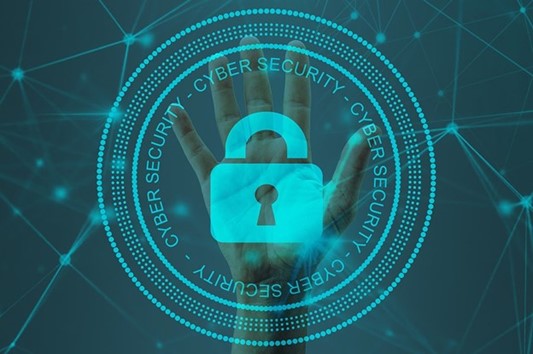
Public networks expose your business to security threats. Switching to a VPN can greatly help in reducing those threats.
Many companies rely on public networks for communication and data sharing. It allows them to cut costs and allocate their funds elsewhere.
However, it also raises several security issues.
For starters, the network provider might be monitoring the activity, which gives them access to customer details, emails, and critical files. As a result, sensitive information can end up in the wrong hands, compromising the organization’s reputation.
Another potential consequence is losing access to bank accounts, credit cards, and invaluable resources. These issues can lead to huge losses for any business.
Your business might be facing the same risk whenever a team member connects to a public network.
To eliminate it, you need to switch to a virtual private network (VPN). They offer online anonymity and privacy, enabling you to conduct your operations away from prying eyes.
Still, you can’t go for just any VPN. This article features the 10 factors to consider when choosing the right one.
The 10 Factors for Choosing a VPN
Factor 1. Location
The location of your VPN servers is essential for a few reasons.
For example, the greater the distance between your server and your business, the higher the chances of facing latency issues. That’s why to ensure a seamless surfing experience, stick to the nearest server available.
Furthermore, you can also consider a VPN from the same place as the content your team needs to access to overcome geographic restrictions. If your work requires research from the UK, for example, find servers from that country.
Factor 2. Price
Using free VPNs might be tempting, but they deliver a lackluster experience. To start with, they can log you out of internet activities and are often chock-full of disruptive ads.
You’re much better off investing in a paid platform. They come with various robust features, a larger number of servers, and configurations to bolster your security.
Factor 3. Device Compatibility
Another detail you should consider is the compatibility of your VPN.
In most cases, you need software that can work with several devices, such as your smartphone, laptop, and tablet. Otherwise, cross-platform work will suffer.
Factor 4. Capacity
Before choosing your VPN, make sure to determine the amount of data you can use. That means if your operations warrant tons of online resources, you should pick a solution that supports considerable data allocation.
Moreover, check the number of online servers. The higher the number, the more efficiently your platform can support resource-intensive tasks.
Factor 5. Protocol Support
Protocols are rules that stipulate connections between the client (software on your device) and the server.
There are different protocols, but the most widely used ones include PPTP, OpenVPN, IPSec, SSL, SSH, and SSTP. Each offers varying speeds and levels of security, both of which are vital to your company.
For instance, OpenVPN is an open-source protocol and one of the safest options for enterprises. It runs on 256-bit encryption keys and advanced ciphers, offering robust protection against cyberattacks. Plus, it features excellent firewall compatibility.
Factor 6. Data Logging Policies
VPNs log user data to streamline customer support and limit available connections. However, you need to consider what information they’re logging.
In most cases, this includes session times and IP addresses. But some providers can also log your software, downloaded files, and web pages you visit.
When looking for a suitable VPN, be sure to read the data logging policy to determine the information the app will store. You should also verify the company is transparent; if someone tries to deceive you, turn down their offer.
Factor 7. Availability of a Kill Switch
No cybersecurity measure is fail proof – VPNs are no exception. Overloaded platforms can trigger IP leaks, interrupting your private connection and exposing your true address when online.
To avoid this scenario, look for platforms with a built-in kill switch. It disrupts your devices’ access to the internet in case of IP leaks. The kill switch stops transfers of unencrypted information and can help prevent cybercriminals from obtaining your data.
Factor 8. Updates
Your VPN provider needs to roll out regular updates to ensure you can perform your operations safely and efficiently.
If they don’t openly specify the update frequency on their webpage, find out when the last update was on your app store. It should give you a clue on how frequently the updates get sent out.
Factor 9. Centralized Management
Centralized management enables you to control VPN distribution more easily, allowing you to manage access permissions and user accounts. Some of the best apps even feature gateway or role-based access management. It permits users to access only those segments of the network they need to perform their jobs.
Another important consideration here is control from your console. IT administrators should have permission to open and delete accounts as well as check the devices linked to the platform.
Lastly, your organization might benefit from VPNs with IP whitelisting. They allow administrators to approve the IP addresses of your enterprise to ensure only members with a verified IP can use corporate resources. This feature provides granular control over network accessibility.
Factor 10. Customer Support
Customer support might be the most significant factor. Your provider should be easy to contact through different portals such as telephone and email.
Easy accessibility lets you inform the VPN developer about various issues. For instance, they can help restore your network if it goes down and prevents unwanted exposure.
Most client support teams are highly accessible, but make sure to verify this by reading customer reviews.
SAFEGUARD AGAINST CYBERATTACKS WITH A BULLETPROOF VPN
Loss of data can happen at any time, which can give your competitors the upper hand and tarnish your reputation. Switching to a VPN can greatly increase your businesses cybersecurity. Users will also need to enable multi-factor authentication when they are connecting to a business network via a VPN connection, and Databranch can help identify and configure the best solution.
Contact us today at 716-373-4467 x 15 or [email protected] if you would like to discuss your VPN options. You’ll also want to patch up any other cybersecurity vulnerabilities and we can help you make that happen.
Article used with permission from The Technology Press.
Read More

Conducting a vulnerability assessment is important because the exercise will identify security flaws that exist in your IT environment before they are discovered by a malicious computer hacker. Once the vulnerabilities are discovered you can correct them and lower your risk of becoming a victim of a cybersecurity attack.
What Will a Vulnerability Assessment Do?
A vulnerability assessment will discover common security weaknesses such as:
- Operating systems and applications that are not current with the latest security updates or patches.
- Unsecure legacy operating systems that are no longer supported by manufacturer.
- Open ports on perimeter defenses and other devices that allow malicious attackers to easily gain access to your private computer network.
- All Common Vulnerabilities and Exposures (CVE) that exist on the computer network.
Common Vulnerabilities and Exposures (CVE) is a database of publicly disclosed information security issues. There are currently over 163 thousand CVE records catalogued and made publicly available by the CVE program. You can explore the database at www.cve.org.
Why does this matter? Because it is important to recognize that new information security flaws are discovered regularly and then shared publicly. Sharing the information is not restrictive. Everyone can search the CVE database, including the hackers that intend to attack your computer network!
What Happens After the Assessment?
Executing routine vulnerability assessments will discover all the known vulnerabilities on your network before the bad actors have an opportunity to exploit them. Vulnerability assessments are nonintrusive and not disruptive.
Typically, a vulnerability assessment can be completed in a day or two. The results of a vulnerability assessment are documented and provided to the stakeholder complete with recommendations around remediating any weaknesses found.
It is important to conduct vulnerability assessments regularly, at least every quarter if not more frequently. This is due to the dynamic nature of information technology. Many changes occur on a day-to-day basis that can introduce new exposures associated with information security. Examples include:
- The introduction or removal of employees and business process.
- The implementation or elimination of hardware, software, or business applications.
- Configuration changes made to any element of the technology environment.
- Newly discovered bugs and flaws found in off the shelf commercial software products.
Security shortcomings found during a vulnerability assessment can almost always be fixed. Many times, the fixes are very easy to accomplish. Roughly 60% of all reported cybersecurity breaches occurred because the bad actors exploited common vulnerabilities and exposures (CVE).
This means that roughly 60% of all reported cybersecurity breaches could have been prevented if the victim had simply conducted a vulnerability assessment and made small improvements to their cybersecurity posture that would have eliminated a substantial amount of risk.
Interested in setting up a vulnerability assessment? Contact Databranch today at 716-373-4467, [email protected] , or click here to set up a meeting with one of our experienced team members.
Content was provided courtesy of CyberStone.
Read More

What are Local Admin Privileges?
Many companies allow their employees to make adjustments to their work computers without the need for IT interference. This means that they can download programs, connect to printers, and modify software already installed on their computer.
Users generally enjoy the freedom that local admin rights provide, especially in a company with limited IT personnel. Instead of waiting for an available IT worker, you can go into your computer and make the adjustments that you desire.
However, providing users with local admin rights will leave holes in your cybersecurity.
Why You Should Reconsider Local Admin Privileges
1. Prevents Malware from being Downloaded
Restricting users’ ability to install software not only prevents them from installing unnecessary programs onto their computer, but it can also stop an employee from accidentally clicking and installing malware.
Employees come into contact with malicious software more than they realize. This could be through an attachment on a phishing email, a malicious website link, or if they decided to scroll through social media on a company device.
Around 66% of cybercriminals rank email phishing as their attack vector of choice. Unsuspecting employees may be fooled by an illegitimate email without thinking twice. Without local admin privileges, then there is an increased chance the malware will be stopped since the employee doesn’t have the authorization to install software onto their computer.
2. Decreases the Privileges for Potential Hackers
If a hacker were to gain access to an account with local admin privileges, the damage could be endless. This is especially true for a business that is not utilizing security measures such as Multi-Factor Authentication (MFA) or Password Managers.
Once a hacker has breached your computer they could download malware, spyware, or even ransomware. Resulting in computer files being locked, credentials being stolen, or even a virus spreading throughout your entire network.
Restricting local admin privilege’s for your employees is a great way to decrease cybersecurity threats from happening in the first place. However, security measures like Password Managers or using MFA can decrease the damage done by a hacker if a computer were to be compromised.
According to Microsoft, MFA can block over 99.9% of account compromise attacks. This means that even if a hacker knows your credentials, they will not be able to log in because they won’t have access to your MFA code.
If this is something you are interested in setting up for your organization, give us a call at 716-373-4467 or email [email protected].
3. Minimizes the Risk of Costly Downtime
Receiving malware or having a hacker breach your security system could cause your company to shut down while the issue is being resolved. All the time you could have been spending working on a project, closing a deal, or procuring new clients is now lost.
This could also result in your businesses reputation taking a hit. Clients will wonder why you’ve had to close for days, weeks, or maybe even months. Plus, you may have to discuss security risks with some clients if their personal information was leaked during the breach.
Interested in calculating what the cost of downtime could be for your business? Click here for Databranch’s Recovery Time Calculator.
4. Prevents Restricted Files and Accounts from Being Edited
Accidentally clicking the wrong button happens to the best of us. You could be reviewing some important client files when your finger slips and presses the delete button by mistake. You may not notice right away and by the time you realize and try to get your information back, it’s too late.
Restricting local admin privileges allows a company to control which files can be modified, deleted, or moved.
On top of this, restricting users’ ability to modify accounts and files not only prevents employees from making a mistake but also prevents hackers from altering your companies settings as well. A hacker who has breached an account with local admin privileges could secretly make an account for themselves or even disable antivirus software.
Solutions
Principle of Least Privileges
Adopting the Principals of Least Privilege is a great addition to a companies security portfolio. This is when a business only gives their employees the minimum level of access privileges that are needed to fulfill their job requirements.
If the employee needs to download additional software or update a program on their computer, they will need to have IT personnel log into their administrative account and make these adjustments for them.
Here at Databranch, we not only believe in the Principle of Least Privileges but we actively practice it. None of our employee login accounts have local administrative privileges.
MFA and Password Managers
Enabling MFA and utilizing Password Managers is another great way to stay on top of cybersecurity for your business. These applications are easy to use, relatively inexpensive, and extremely beneficial to a company.
Want to talk to an IT Professional about any of the topics covered in this article? You can contact us at today at 716-373-4467 x 15 or [email protected] to set up a meeting, or simply fill out the form below and one of our team members will contact you. We would love to talk about your cybersecurity and how we can help you enhance it.
Read More

The global damage of cybercrime has risen to an average of $11 million USD per minute, which is a cost of $190,000 each second.
60% of small and mid-sized companies that have a data breach end up closing their doors within six months because they can’t afford the costs. The costs of falling victim to a cyberattack can include loss of business, downtime/productivity losses, reparation costs for customers that have had data stolen, and more.
You may think that this means investing more in cybersecurity, and it is true that you need to have appropriate IT security safeguards in place (anti-malware, firewall, etc.). However, many of the most damaging breaches are due to common cybersecurity mistakes that companies and their employees make.
The 2021 Sophos Threat Report, which looked at thousands of global data breaches, found that what it termed “everyday threats” were some of the most dangerous. The report stated, “A lack of attention to one or more aspects of basic security hygiene has been found to be at the root cause of many of the most damaging attacks we’ve investigated.”
Is your company making a dangerous cybersecurity mistake that is leaving you at high risk for a data breach, cloud account takeover, or ransomware infection?
Here are several of the most common missteps when it comes to basic IT security best practices.
NOT IMPLEMENTING MUTI-FACTOR AUTHENTICATION (MFA)
Credential theft has become the top cause of data breaches around the world, according to IBM Security. With most company processes and data now being cloud-based, login credentials hold the key to multiple types of attacks on company networks.
Not protecting your user logins with multi-factor authentication is a common mistake and one that leaves companies at a much higher risk of falling victim to a breach.
MFA reduces fraudulent sign-in attempts by a staggering 99.9%.
IGNORING THE USE OF SHADOW IT
Shadow IT is the use of cloud applications by employees for business data that haven’t been approved and may not even be known about by a company.
Shadow IT use leaves companies at risk for several reasons:
- Data may be used in a non-secure application
- Data isn’t included in company backup strategies
- If the employee leaves, the data could be lost
- The app being used might not meet company compliance requirements
Employees often begin using apps on their own because they’re trying to fill a gap in their workflow and are unaware of the risks involved with using an app that hasn’t been vetted by their company’s IT team.
It’s important to have cloud use policies in place that spell out for employees the applications that can and cannot be used for work.
THINKING YOU’RE FINE WITH ONLY AN ANTIVIRUS APPLICATION
No matter how small your business is, a simple antivirus application is not enough to keep you protected. In fact, many of today’s threats don’t use a malicious file at all.
Phishing emails will contain commands sent to legitimate PC systems that aren’t flagged as a virus or malware. Phishing also overwhelmingly uses links these days rather than file attachments to send users to malicious sites. Those links won’t get caught by simple antivirus solutions.
You need to have a multi-layered strategy in place that includes things like:
- Next-gen anti-malware (uses AI and machine learning)
- Next-gen firewall
- Email filtering
- DNS filtering
- Automated application and cloud security policies
- Cloud access monitoring
Databranch provides these foundational elements to all their managed service clients to ensure the protection of their business. Reach out at 716-373-4467 x 15 or [email protected] if you would like to learn more about our Foundation Security Platform and how we can help your organization be more secure.
NOT HAVING DEVICE MANAGEMENT IN PLACE
A majority of companies around the world have had employees working remotely from home since the pandemic, and they’re planning to keep it that way. However, device management for those remote employee devices as well as smartphones used for business hasn’t always been put in place.
If you’re not managing security or data access for all the endpoints (company and employee-owned) in your business, you’re at a higher risk of a data breach.
If you don’t have one already, it’s time to put a device management application in place, like Intune in Microsoft 365 or IBM’s MaaS 360 platform.
NOT PROVIDING ADEQUATE TRAINING TO EMPLOYEES
An astonishing 95% of cybersecurity breaches are caused by human error. Too many companies don’t take the time to continually train their employees, and thus users haven’t developed the skills needed for a culture of good cybersecurity.
Employee IT security awareness training should be done throughout the year, not just annually or during an onboarding process. The more you keep IT security front and center, the better equipped your team will be to identify phishing attacks and follow proper data handling procedures.
Some ways to infuse cybersecurity training into your company culture include:
- Short training videos
- IT security posters
- Webinars
- Team training sessions
- Cybersecurity tips in company newsletters
Click here to learn more about our continuous security awareness training program.
WHEN DID YOU LAST HAVE A CYBERSECURITY CHECKUP?
Don’t stay in the dark about your IT security vulnerabilities. Contact us today if you want to discuss your cybersecurity in greater detail and pinpoint potential risks. We can arrange a quick chat to review our Foundation Security Platform and how it can help enhance your organization’s security posture. Give us a call at 716-373-4467 x 15 or email us at: [email protected] to learn more.
Article used with permission from The Technology Press.
Read More

Whether you work remotely or in an office, the line between personal and work tasks can become blurred when working on your company computer. If you’re in front of a computer for most of your time during work, then it’s not unusual to get attached to your desktop PC.
Over time, this can lead to doing personal things on a work computer. At first, it might just be checking personal email while on a lunch break. But as the line continues to get crossed, it can end up with someone using their work computer just as much for personal reasons as work tasks.
In a survey of over 900 employees, it was found that only 30% said they never used their work PC for personal activities. The other 70% admitted to using their work computer for various personal reasons.
Some of the non-work-related things that people do on a work computer include:
- Reading and sending personal email
- Scanning news headlines
- Shopping online
- Online banking
- Checking social media
- Streaming music
- Streaming videos/movies
It’s a bad idea to mix work and personal, no matter how much more convenient it is to use your work PC for a personal task during the day. You can end up getting reprimanded, causing a data breach at your company, or possibly losing your job.
Here are several things you should never do on your work PC.
1. SAVE YOUR PERSONAL PASSWORDS IN THE BROWSER
Many people manage their passwords by allowing their browser to save and then auto-fill them. This can be convenient, but it’s not very secure should you lose access to that PC.
When the computer you use isn’t yours, it can be taken away at any time for a number of reasons, such as an upgrade, repair, or during an unexpected termination.
If someone else accesses that device and you never signed out of the browser, that means they can leverage your passwords to access your cloud accounts.
Not all older PCs are stored in a storeroom somewhere or destroyed. Some companies will donate them to worthy causes, which could leave your passwords in the hands of a stranger if the PC hasn’t been wiped properly.
Contact Databranch today to learn more about our Password Management Solution. We make it simple for your business to use strong passwords and increase your security while enhancing your productivity.
2. STORE PERSONAL DATA
It’s easy to get in the habit of storing personal data on your work computer, especially if your home PC doesn’t have a lot of storage space. But this is a bad habit and leaves you wide open to a couple of major problems:
- Loss of your files: If you lose access to the PC for any reason, your files can be lost forever
- Your personal files being company-accessible: Many companies have backups of employee devices to protect against data loss. So, those beach photos stored on your work PC that you’d rather not have anyone else see could be accessible company-wide because they’re captured in a backup process.
3. VISIT UNSECURE WEBSITES
You should assume that any activity you are doing on a work device is being monitored and is accessible by your boss. Companies often have cybersecurity measures in place like DNS filtering that is designed to protect against phishing websites.
This same type of software can also send an alert should an employee be frequenting an unauthorized website deemed dangerous to security.
You should never visit any website on your work computer that you wouldn’t be comfortable visiting with your boss looking over your shoulder.
4. ALLOW FRIENDS OR FAMILY TO USE IT
When you work remotely and your work computer is a permanent fixture in your home, it can be tempting to allow a friend or family member to use it if asked. Often, work PCs are more powerful than a typical home computer and may even have company-supplied software that someone wouldn’t purchase on their own.
But allowing anyone else to use your work computer could constitute a compliance breach of data protection regulations that your company needs to adhere to.
Just the fact that the personal data of your customers or other employees could be accessed by someone not authorized to do so, can mean a stiff penalty.
Additionally, a child or friend not well-versed in cybersecurity could end up visiting a phishing site and infecting your work device, which in turn infects your company cloud storage, leaving you responsible for a breach.
At least 20% of companies have experienced a data breach during the pandemic due to a remote worker.
5. TURN OFF COMPANY-INSTALLED APPS LIKE BACKUPS AND ANTIVIRUS
If you’re trying to get work done and a backup kicks in and slows your PC down to a crawl, it can be tempting to turn off the backup process. However, this can leave the data on your computer unprotected and unrecoverable in the case of a hard drive crash or ransomware infection.
Company-installed apps are there for a reason and it’s usually for cybersecurity and business continuity. These should not be turned off unless given express permission by your supervisor or company’s IT team
HOW SECURE IS THE DEVICE YOU USE TO WORK FROM HOME?
Whether you’re working remotely and worried about causing a data breach or are a business owner with multiple remote team members to secure, device protection is important. Contact Databranch today at 716-373-4467 x 15 or [email protected] if you would like to enhance your security and want to discuss your options.
Article used with permission from The Technology Press.
Read More
Conducting business operations in the digital world is prone to security risks. Mitigating them would be impossible if you don’t have an IT compliance policy.
Setting up a robust IT compliance policy in your business is more important now than ever and it’s because most organizations now depend on digitized services.
Online companies rely on e-commerce websites to do business by taking orders and receiving payments. Even brick-and-mortar organizations utilize software to perform various activities, such as order management and back-office accounting.
In such tech-driven environments, a lack of proper security measures jeopardizes the business leader’s position. Their IT systems get abused and their technology often becomes a source of scandals.
The only way to avoid this possibility is to create a strong IT compliance policy.
This article will cover key considerations when developing your system of IT compliance and how Databranch can help you implement an IT compliance policy.
WHAT YOU NEED TO CONSIDER FOR IT COMPLIANCE POLICIES
FACTOR #1 – PEOPLE, PROCESSES, AND HOW THEY ALIGN TO TECH
IT compliance isn’t just about technology – it also involves people and processes. And the reality is that many organizations focus heavily on their tech, resulting in failed audits due to their failure to consider the other two aspects. This makes the compliance world more complex.
Taking the correct approach can help ensure your enterprise abides by the necessary standards.
FACTOR #2 – RELEVANT LAWS AND REGULATIONS
Laws and regulations stipulate the policies that govern IT compliance requirements. Here are the most common ones:
- The Sarbanes-Oxley Act – regulating financial reporting
- The Gramm-Leach-Bliley Act – governing non-public personal information and financial data
- The Health Insurance and Accountability ACT – regulating health information that healthcare organizations process
Ultimately, you can’t start your compliance process without understanding the laws and regulations applicable to your organization.
You should also ascertain the controls that apply to these laws and regulations. They are process-oriented and technical means to adhere to your policies.
There are various industry and government standards that specify them, including:
- Control Objectives for Information and Related IT
- National Institute of Standards and Technology
- Payment Card Industry Data
These can have a massive bearing on your sector. Therefore, make sure to familiarize yourself with all relevant controls.
FACTOR #3 – RAISING EMPLOYEE AWARENESS OF THE IMPORTANCE OF THE POLICY
One of the biggest threats to your data security is having untrained employees. Their actions can have a huge impact on cybersecurity. For instance, improper software upload, sharing, download, and storing can jeopardize critical information.
The reality is, many employees opt for insecure data transfer methods due to their convenience. Some of the tools they use are personal emails, consumer-grade collaboration apps, and instant messaging. All of these are ideal targets for cyber criminals.
To prevent your business from becoming a victim, your users must learn and understand where various threats originate from. They should especially understand the actions that can give rise to vulnerabilities.
Making file sharing a top priority and investing in proper education demonstrates the significance of IT compliance. Your efforts can help team members willing to adopt the best practices in this field.
When developing your training plan, make sure to include several key topics:
- How insecure file transfer methods expose your company to risks
- Avoiding phishing scams
- Precautions to exercise before using or downloading unsanctioned applications
- The conditions for using and creating strong passwords.
FACTOR #4 – HOW YOUR IT POLICY ALIGNS WITH THE COMPANY’S SECURITY POLICIES
Aligning IT compliance with your business operations involves understanding the culture of your organization. For example, your environment can revolve around either processes or ad-hoc ways of doing things.
Enterprises aligning with the former are best off issuing in-depth policies to ensure compliance.
By contrast, companies that match the latter require detective and preventive controls. They need to address specific risks associated with your policy. It helps various auditors understand why you’ve deployed a particular control or decided to face certain risks.
FACTOR #5 – UNDERSTANDING OF THE IT ENVIRONMENT
IT environments directly affect your IT policy compliance design. That said, there are two main kinds of environments:
- Homogeneous environments – These consist of standardized vendors, configurations, and models. They’re largely consistent with your IT deployment.
- Heterogeneous environments – The other type uses a wide range of security and compliance applications, versions, and technologies.
Generally, compliance costs are lower in homogeneous environments. Fewer vendors and technology add-ons provide less complexity and fewer policies. As a result, the price of security and compliance per system isn’t as high as with heterogeneous solutions.
Regardless of your environment, your policy needs to appropriately tackle new technologies, including virtualization and cloud computing.
FACTOR #6 – ESTABLISHMENT OF ACCOUNTABILITY
IT policy compliance doesn’t function without accountability. It entails defining organizational responsibilities and roles that determine the assets individuals need to protect. It also establishes who has the power to make crucial decisions.
Accountability begins from the top and encompasses executives and the best way to guarantee involvement is to cast IT policy compliance programs in terms of risks instead of technology.
As for your IT providers, they have two pivotal roles:
- Data/system owners – The owner is part of your management team that’s responsible for data usage and care. Plus, they’re accountable for protecting and managing information.
- Data/system custodians – Custodial roles can entail several duties, such as system administration, security analysis, legal counseling, and internal auditing.
These responsibilities are essential for IT policy compliance. For example, auditors need to carefully verify compliance activity execution. Otherwise, there’s no way to ensure the implementation is going according to plan.
FACTOR #7 – AUTOMATION OF THE COMPLIANCE PROCESS
Your IT continually evolves and grows. Internal auditors can only review a small number of user accounts and system configurations.
Automation is the only way to ensure you can evaluate enough systems regularly.
BREEZE THROUGH YOUR BUSINESS’S IT COMPLIANCE
Setting up well-designed IT compliance may be a long process, but it can make a world of difference in terms of business security. It keeps your business reputation intact and allows you to avoid penalties and fines.
However, you’ll need to pay special attention to several aspects and one of the most significant ones is your IT provider.
If your IT isn’t living up to its potential, you’re bound to face compliance issues. This can cause tremendous stress and halt your operations.
Luckily, there might be an easy way out of your predicament. Schedule a quick chat with Databranch to discuss your IT problems and find out how to get more out of your provider.
Article used with permission from The Technology Press.
Read More
 IMAGE SOURCE: https://pixabay.com/photos/cyber-security-internet-network-4610993/ An effective way to bolster your business’s data security is to work with a Managed Service Provider (MSP) or I.T. Service Provider (ITSP) like Databranch. They address network vulnerabilities to prevent cyber criminals from exploiting them.
Besides monitoring and organizing your servers, a Managed Service Provider (MSP) or I.T. Service Provider (ITSP) plays a pivotal role in the cybersecurity program of your business. They implement several strategies to shield your network from attacks and protect your data.
For instance, many providers use email authentication protocols to monitor your server’s vulnerabilities. They can keep users from accidentally accessing malicious websites by determining spam emails containing malware or viruses. This results in enhanced system security.
Another common practice is training your employees to ensure they follow the highest security standards. This is especially important if you have remote team members since there’s no way to keep track of their activities. To tackle this issue, an MSP or ITSP teaches your staff how to operate safely to avoid harm to your company’s infrastructure and reputation.
On top of that, an MSP or ITSP can neutralize various threats due to their proactive approach. They offer several tools such as firewalls and endpoint detection to control the traffic and stave off cyber attacks. Also, they can install antivirus software and email security to stop intrusion attempts.
Needless to say, an MSP or ITSP can shield you from a wide array of cybersecurity issues. But it’s vital to work with the right provider.
To ensure this happens, you should look for and abide by the best practices for an MSP or ITSP in the cybersecurity space. This article will examine what they are.
THE 8 BEST PRACTICES
PRACTICE #1 – ENFORCE MULTI-FACTOR AUTHENTICATION (MFA)
Cybercriminals are becoming proficient at accessing your credentials, so it’s critical to enable MFA for all your users.
It consists of three elements: a password, security token, and biometric verification. Consequently, if attackers breach one security layer, they’ll still have to do a lot of digging to access your information.
PRACTICE #2 – MAKE PATCHING A PRIORITY
Application and operating system exploits are common. Hackers target them to access your system and compromise your data, but you can prevent this through regular patching.
Making sure your system is up to date with the latest security standards decreases the risk of exploitation.
PRACTICE #3 – CONDUCT REGULAR CYBERSECURITY AUDITS
An MSP or ITSP must be aware of on boarding, off boarding, and lateral movements within an organization. This warrants frequent cybersecurity audits to assess the competency of your team.
Many MSPs or ITSPs hire third-party companies to perform their security audits. They can detect if a person who no longer needs access to the network still has it. It’s something that can endanger the client’s information, especially if the individual is a former employee.
Conducting regular audits mitigates this risk. It enables an MSP or ITSP to implement some of the most effective access privilege limitations:
- IP restrictions – These security measures ensure that only users who can access your local network can utilize remote administration tools.
- RMM software updates – Software vendors typically dispatch updates to fix vulnerabilities and patch numerous security gaps.
- RDP (Remote Desktop Protocol) Security – This Windows native administration tool reduces the chances of ransomware attacks in your organization.
PRACTICE #4 – HAVE AN OFF-SITE BACKUP
Backups are crucial for tackling malicious activities and ensuring operational continuity after cyber attacks.
They also help address whether the company and its clients can access the latest version of their data and applications. This feature is vital for enterprises that must adhere to compliance requirements, including PCI-DSS and HIPAA.
But besides implementing on-site backups, your MSP or ITSP should also set up off-site versions. If attackers compromise your RMM software, they can most likely reach on-site backups, too.
So, to avoid disasters, businesses should have an off-site backup accessible to only a few people. It should also be offline for greater security.
(Databranch is a proud Datto Diamond Partner and can help your organization implement a true business continuity/data protection solution for your organization.)
PRACTICE #5 – INCORPORATE LOG MONITORING
 IMAGE SOURCE: https://pixabay.com/photos/startup-business-people-students-849804/ Log monitoring is analyzing your logs for potential glitches. As an MSP or ITSP scrutinizes your records, they can detect traffic from harmful sources and provide a clear idea of threat patterns. And over time, they can deploy countermeasures to seal these gaps.
For example, cybersecurity experts use reliable security information and event management (SIEM) tools. They facilitate scanning through piles of information to enable faster threat detection.
PRACTICE #6 – LAUNCH PHISHING CAMPAIGNS
Phishing cyber criminals target your team members with emails or text messages, posing as legitimate institutions to steal your data. Unfortunately, most attacks succeed because of human error, meaning your MSP or ITSP should be aware of and monitor employees’ behavior.
Setting up fake phishing campaigns is a great way to test your team’s ability to respond to phishing attacks. It allows you to pinpoint and improve inadequate responses, bolstering data security.
To learn more about Databranch’s Breach Prevention Platform which includes monthly simulated phishing attempts and continuous end-user security awareness training, click here or email: [email protected]
PRACTICE #7 – CHOOSE YOUR SOFTWARE CAREFULLY AND SECURE ENDPOINTS
From small browser plugins to large-scale business systems, be sure your providers take data protection and cybersecurity seriously. Learn about their commitment to these aspects before purchasing their application.
Furthermore, employ web filtering tools, antivirus software, and email authentication to fend off ransomware attacks through malicious emails. Ensure each endpoint and your virus definition library are secure and up to date with the latest standards.
PRACTICE #8 – SET ALERTS AND DOCUMENT EVERYTHING
An MSP or ITSP that configures their systems to receive alerts upon system changes can work proactively and tackle threats early on. Many platforms automate this process through rules templates, personalization, and direct tickets to the PSA. This eliminates manual digging, saving precious time.
Another useful strategy is to document your cybersecurity information, such as your defense mechanisms, emergency guidelines, and disaster recovery plans. You should also review it regularly to help preempt cyber attacks.
CYBERSECURITY IS PARAMOUNT
While digitalization has significantly streamlined your operations, it’s also made you more susceptible to data theft.
To ensure cyber criminals don’t get their hands on valuable information and ruin your reputation, your MSP or ITSP needs to adopt well-established security practices.
But if your provider hasn’t introduced off-site backups, regular patches, and employee training, you’re not getting your money’s worth. Hence, you may be frustrated since your provider isn’t delivering the necessary results.
This makes you a sitting duck for cyber criminals. You need to resolve the issue as soon as possible.
Databranch can help you do so. Reach out to us for a quick 15-minute chat at 716-373-4467 x 15 and our tech experts will do their best to show you a way out of your cybersecurity dead end.
Article used with permission from The Technology Press.
|
Read More

















